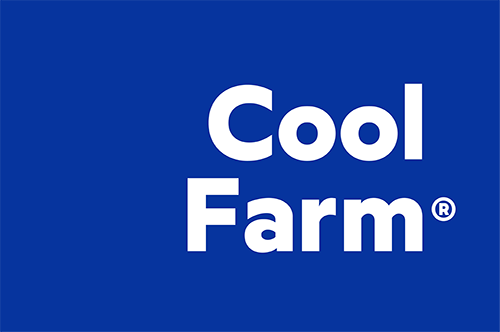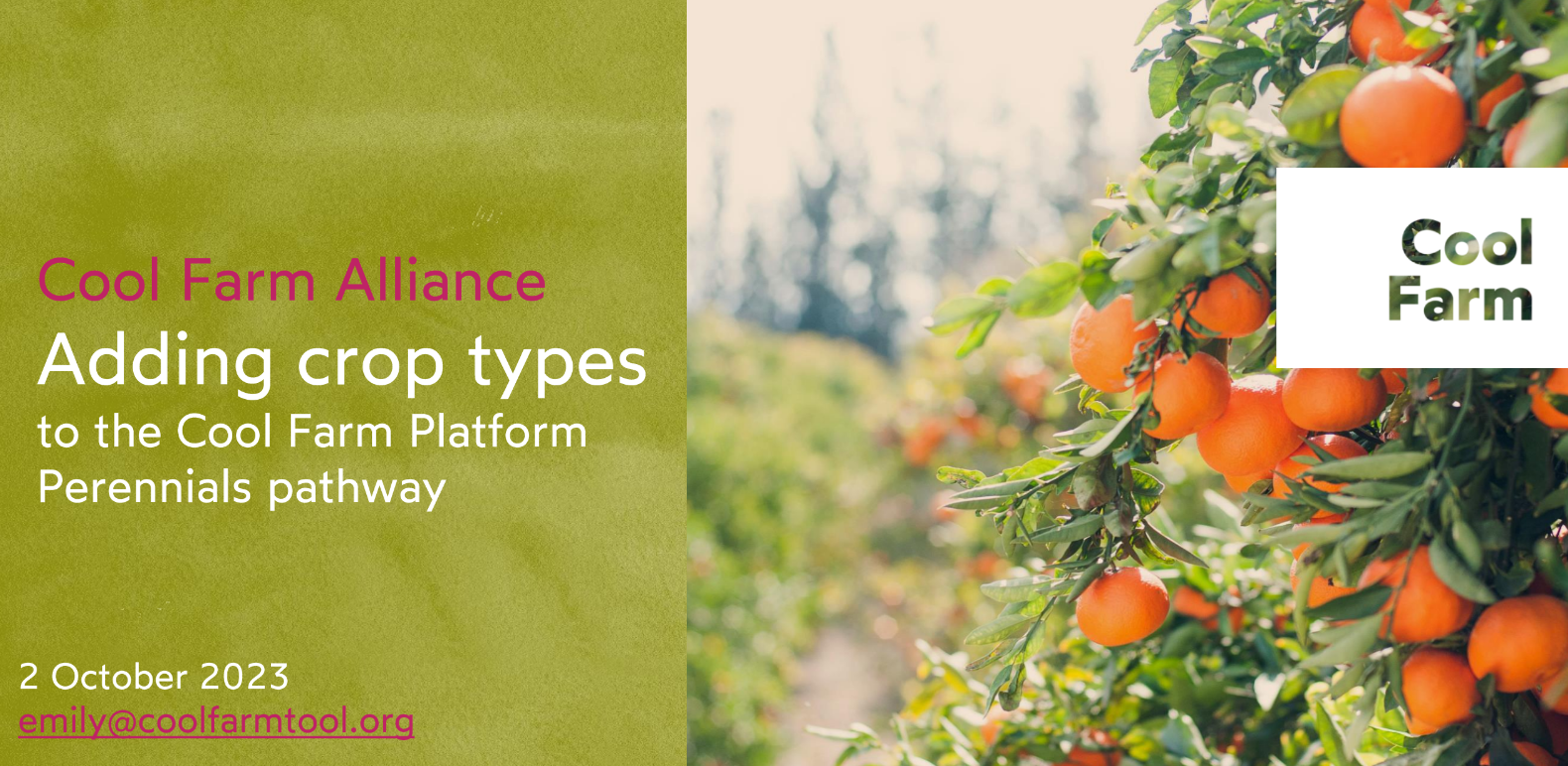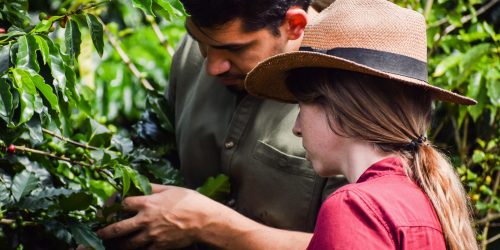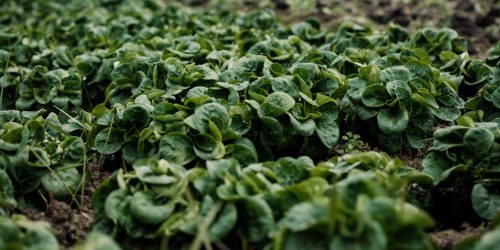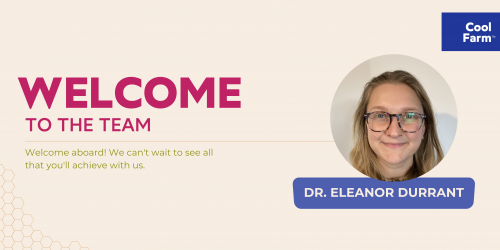MOVING TO THE NEW COOL FARM PLATFORM
David McMahon, Product Manager at Cool Farm Alliance, opened the event by introducing the significant transition from the existing Cool Farm Tool to the new Cool Farm Platform. As the main reasons driving this change, he mentioned high development costs, challenges posed by the current monolithic code base, and limitations in innovation, scalability, and efficiency. In this new modular platform, “evidence models” will streamline calculations for emissions and other metrics. The Cool Farm Platform will also facilitate parallel project engagements and efficient version handling, prioritise data granularity, and enable detailed tracking of emission sources. The Perennials Pathway will be the first project realised in this new environment by the end of 2023.
TYPOLOGIES – WHY ARE THEY IMPORTANT AND WHAT ARE THE CHALLENGES
Science & Methods Manager Megan McKerchar discussed the concept of “typology” within the context of carbon assessments for crops. She explained that a typology essentially means categorising and characterising different crop types based on various factors such as their region, cultivation methods, or specific crop varieties (e.g. apples and bananas). Typologies are very important in driving calculations and forecasts for carbon assessments. They influence various aspects, including yield predictions, carbon content in wood and fruit, nitrogen content in fruit, and more. They also impact the scaling of calculations and influence lifecycle assessments, not just for the current year but also for future projections.
Megan mentioned the six existing typologies of the new Cool Farm perennials model: apples, monoculture and shade-grown coffee, high-density and low-density cocoa, and citrus (including lemons, grapefruits, and oranges). These were chosen mainly due to the available literature and data. Megan highlighted the challenges of limited empirical data in published literature and the need for better information to enable carbon assessments. Only with accurate, detailed, and good data quality, typologies can be robustly modelled. An example is almonds which was proposed as additional typology. There was insufficient data for the “end of life” phase, requiring additional data collection through sampling.
ADDING NEW TYPOLOGIES – WHAT’S NEEDED?
Megan McKerchar provided insights into the detailed steps and considerations involved in adding a new typology:
- DEFINING THE SAMPLING AREA:
The first step in adding a new typology is to determine the scope of the sampling area. This could involve choosing whether to create a typology specific to a single field, an entire region, or even a whole country. The decision depends on the level of detail required.
- DOCUMENTATION OF CONDITIONS AND PRACTICES:
Once the sampling area is defined, documentation of various factors such as agronomic practices, shade trees, and the crop’s life cycle is essential. Specific details about the typology need to be captured for accurate modelling.
- INVENTORY DESIGN:
Depending on the scope of the typology (e.g., single field or multiple countries), an appropriate inventory design is established. This includes defining the sampling protocol for data collection.
- DATA COLLECTION:
Data collection can involve a combination of literature review and on-site data collection. For areas with little existing research, extensive data collection may be necessary. This typically includes measuring standing trees, harvesting them (a labour-intensive process), and separating tree parts for further analysis.
- BIOMASS ANALYSIS:
In the lab, the collected samples are subjected to biomass analysis. This involves drying, weighing, and determining the biomass values. Carbon and nitrogen content measurements are also crucial for driving calculations.
- RESIDUE DATA COLLECTION:
Residue data collection is a separate process that involves collecting and analysing residues from the trees, such as pruning residues or unused parts of harvested crops (e.g., cocoa pods).
- DATA STANDARDISATION:
To ensure consistency, data collection should follow a standardised template. This helps streamline data analysis and modelling for a specific typology.
- COST ESTIMATION:
The cost of adding a new typology can vary widely based on factors such as access to fields, compensation for growers, field and laboratory expenses, workforce expenses, or the number of required samples.
If you are a Cool Farm Alliance member, you can access the full summary on the Cool Farm Learning Portal here.
If you’re curious to learn more about the Cool Farm Alliance and the benefits of joining, simply click here
